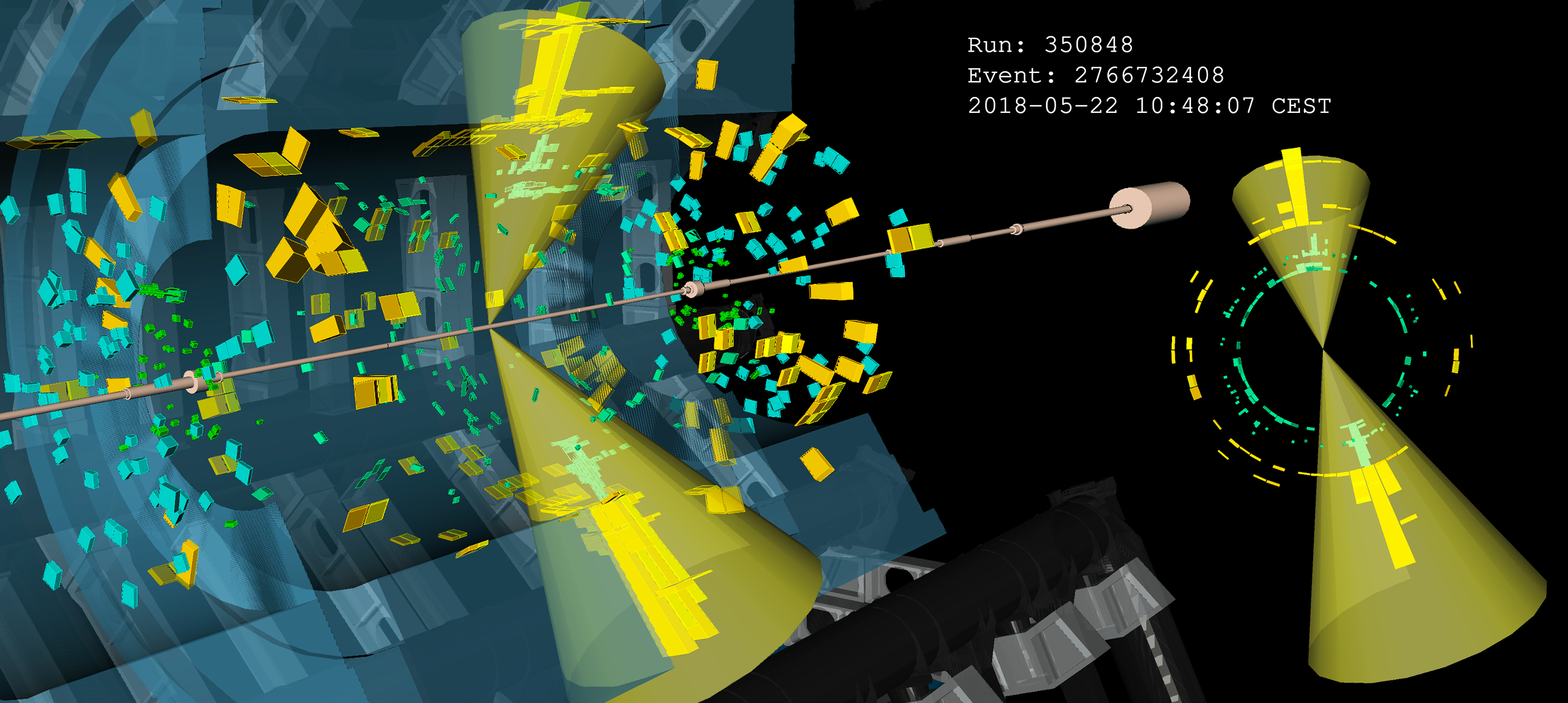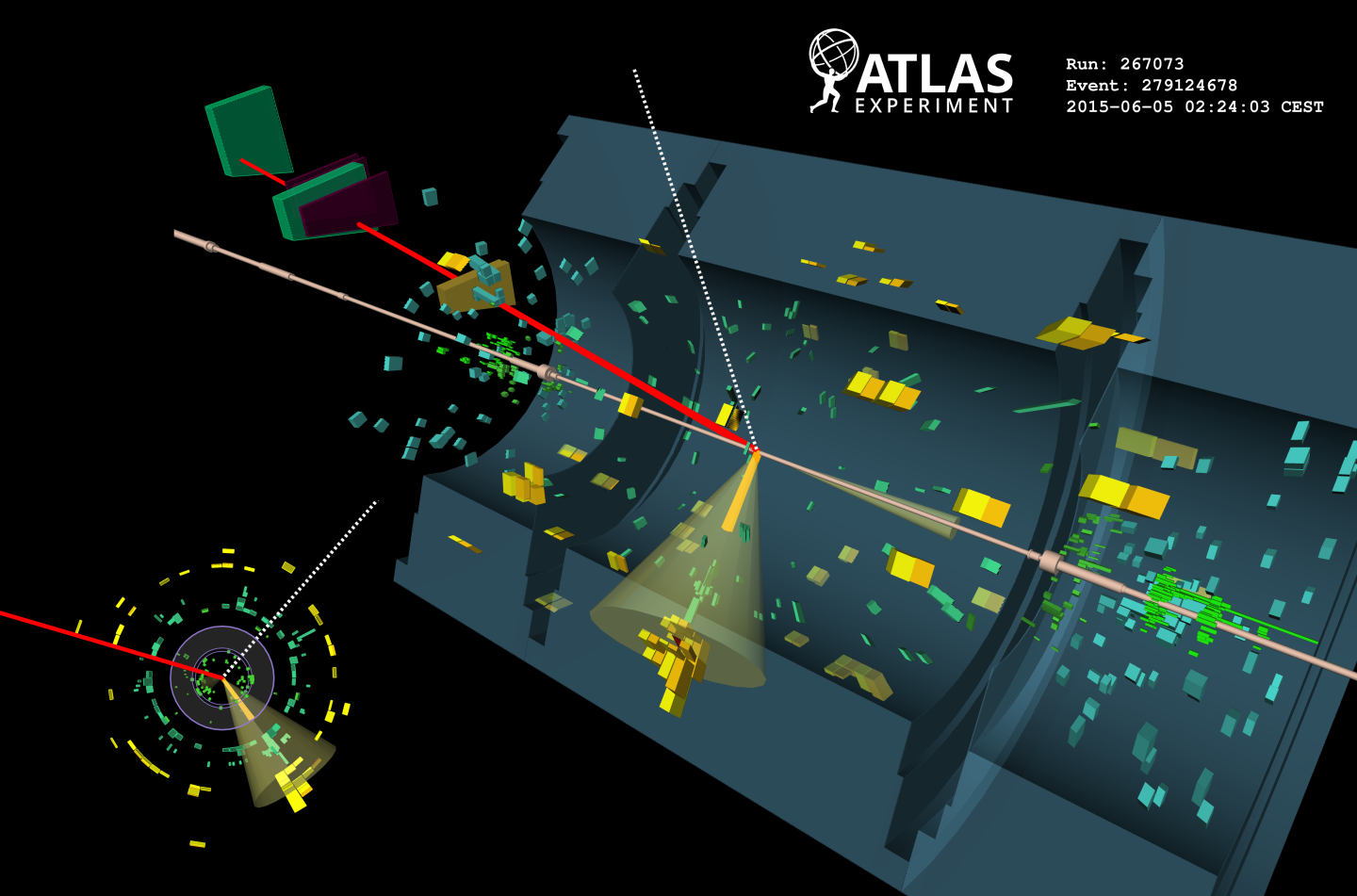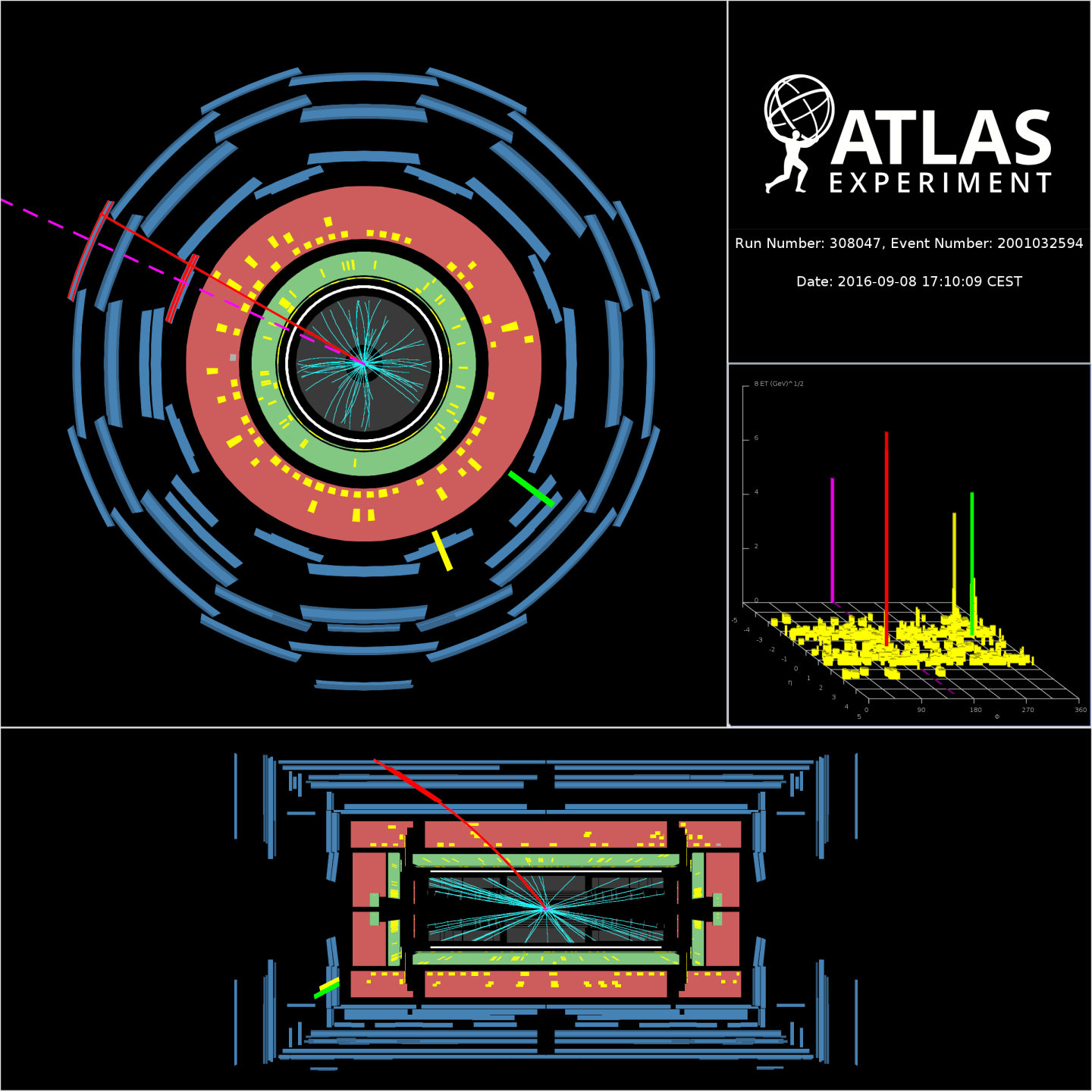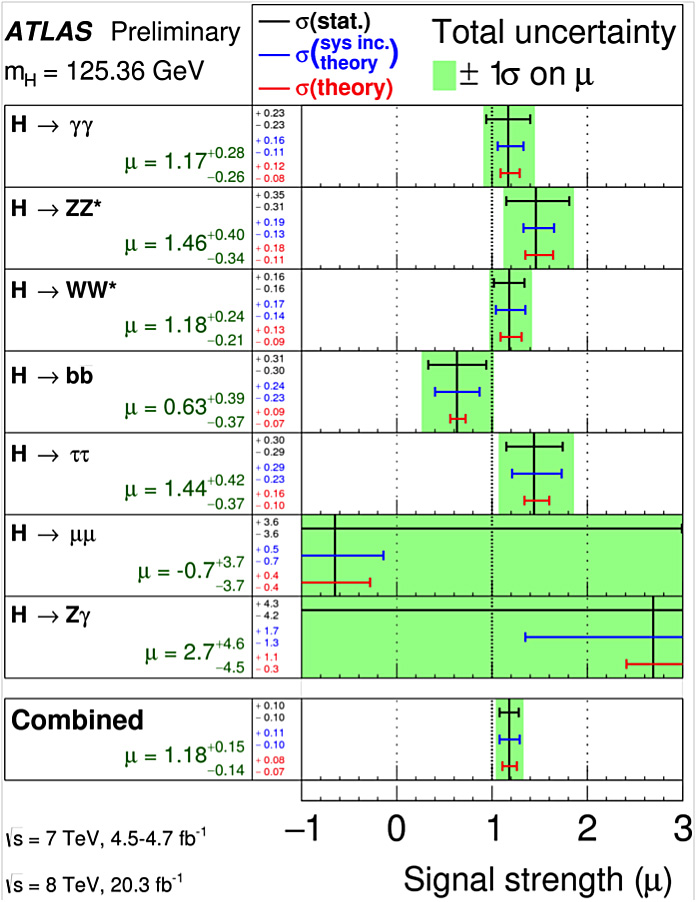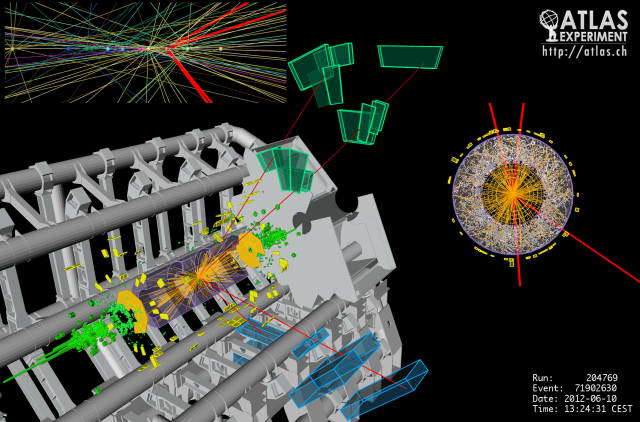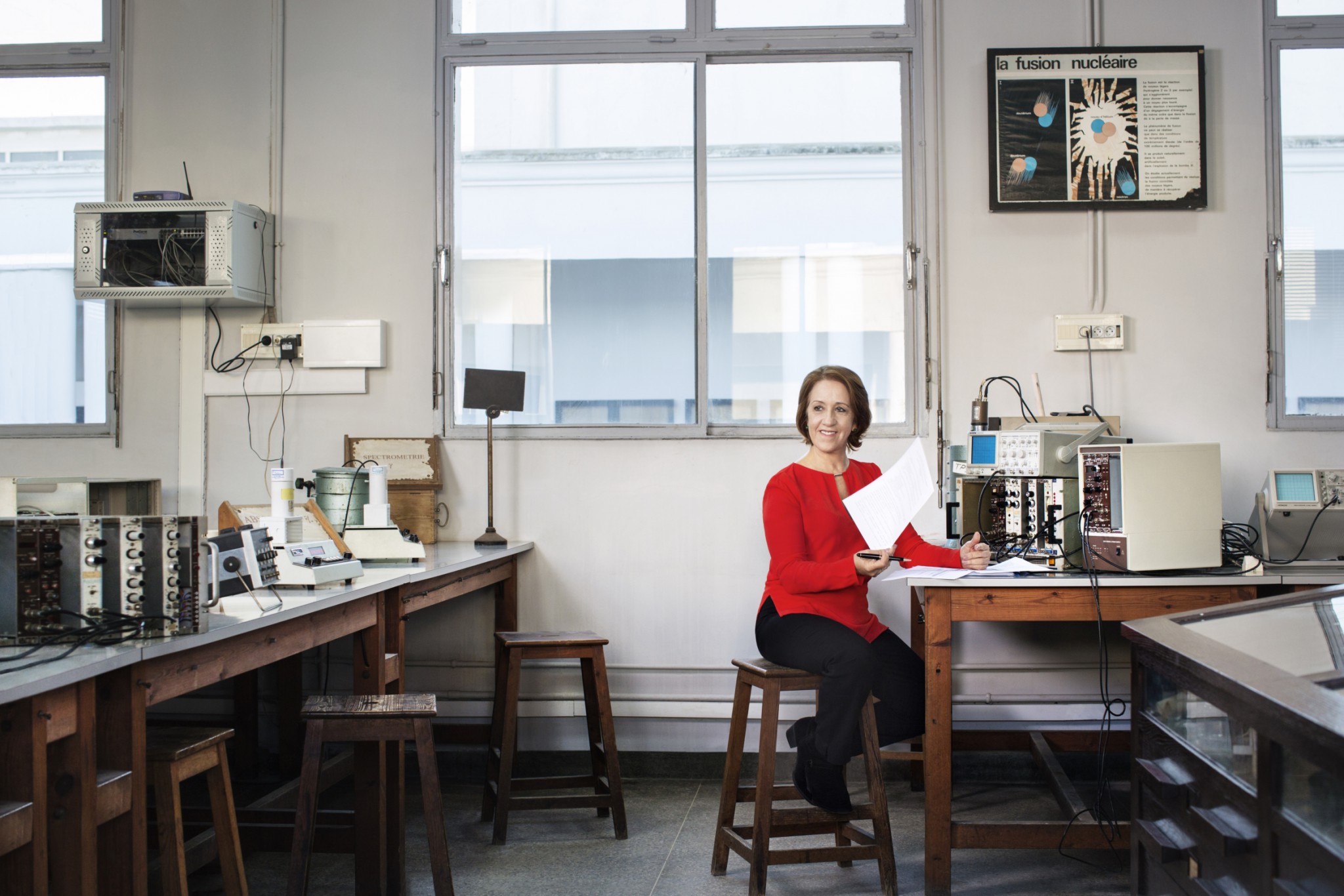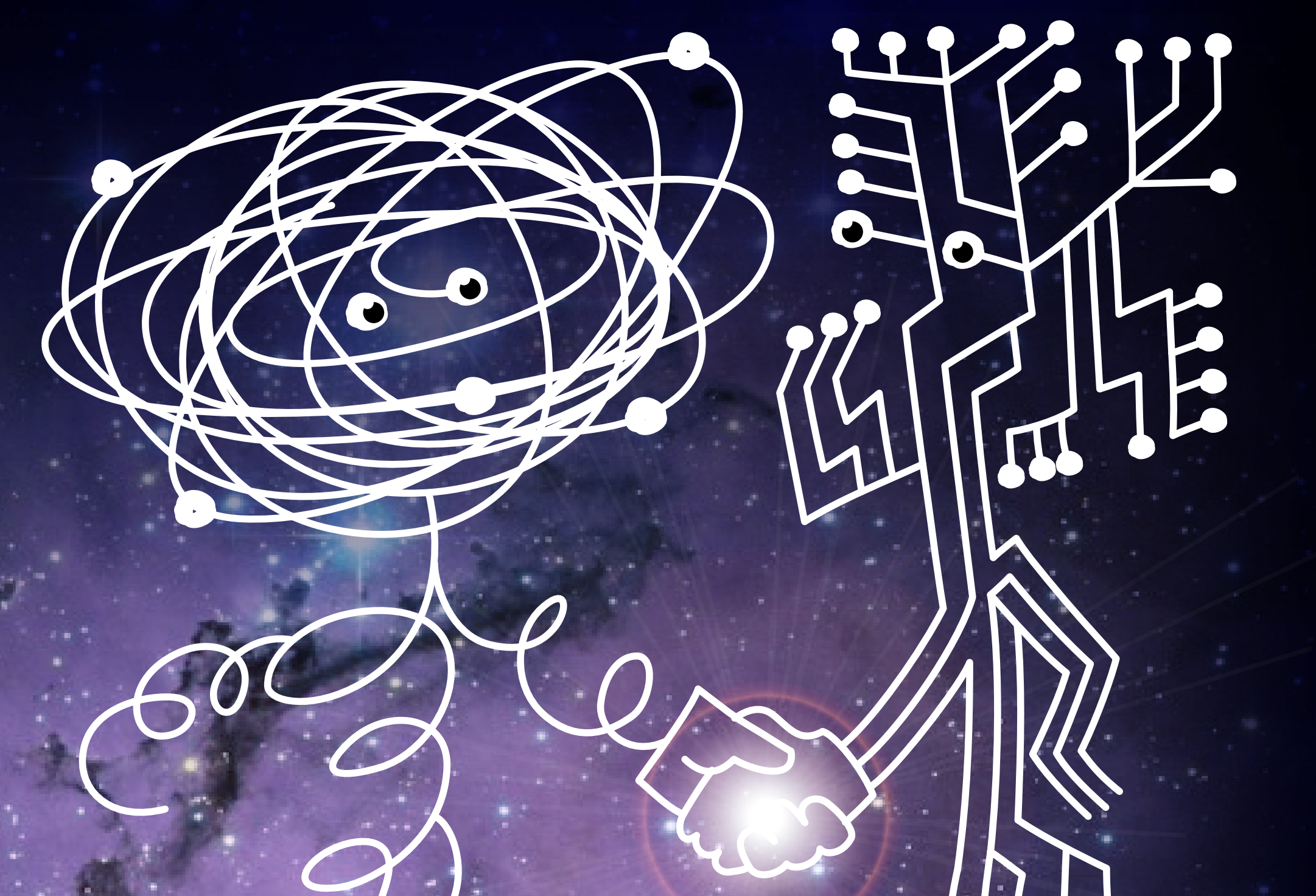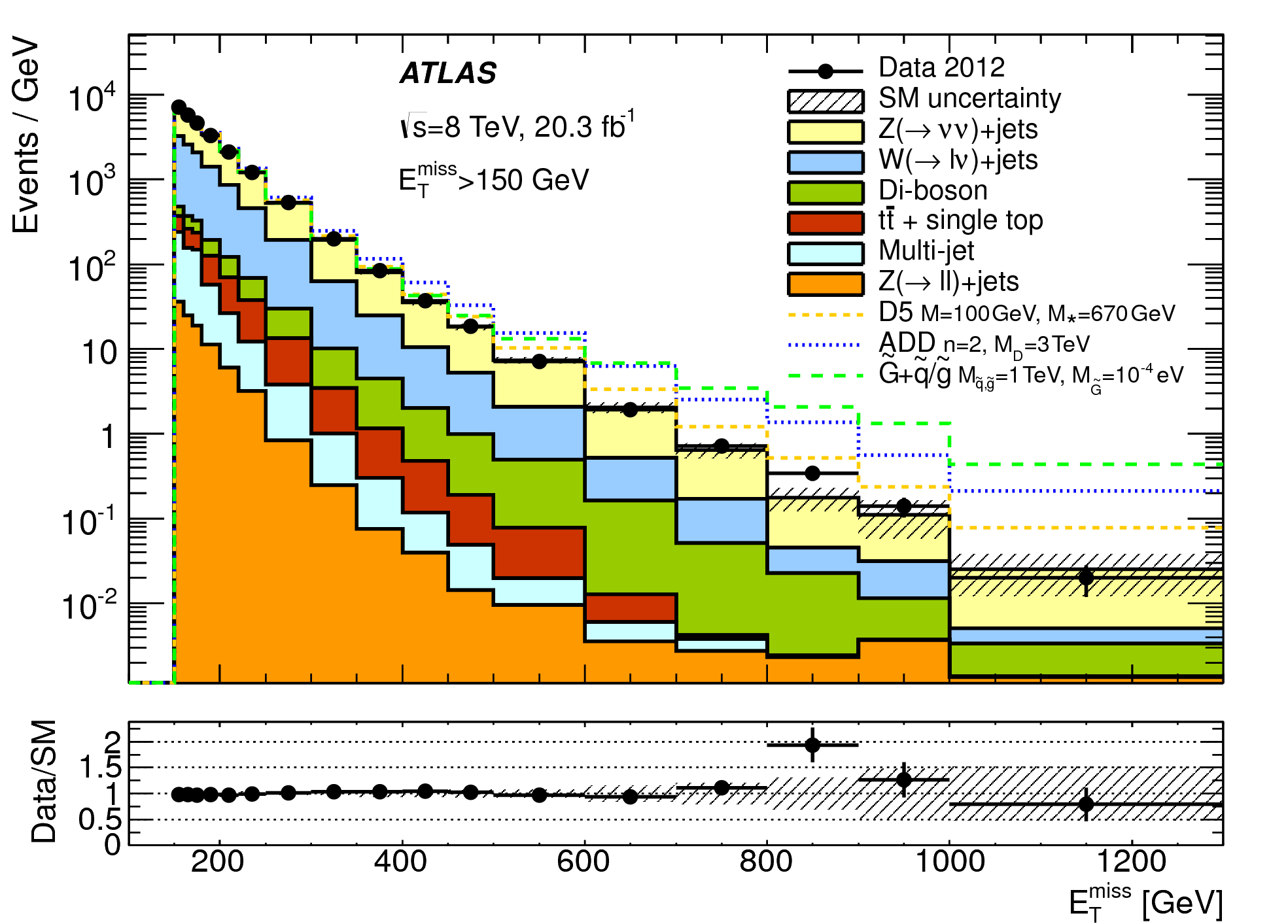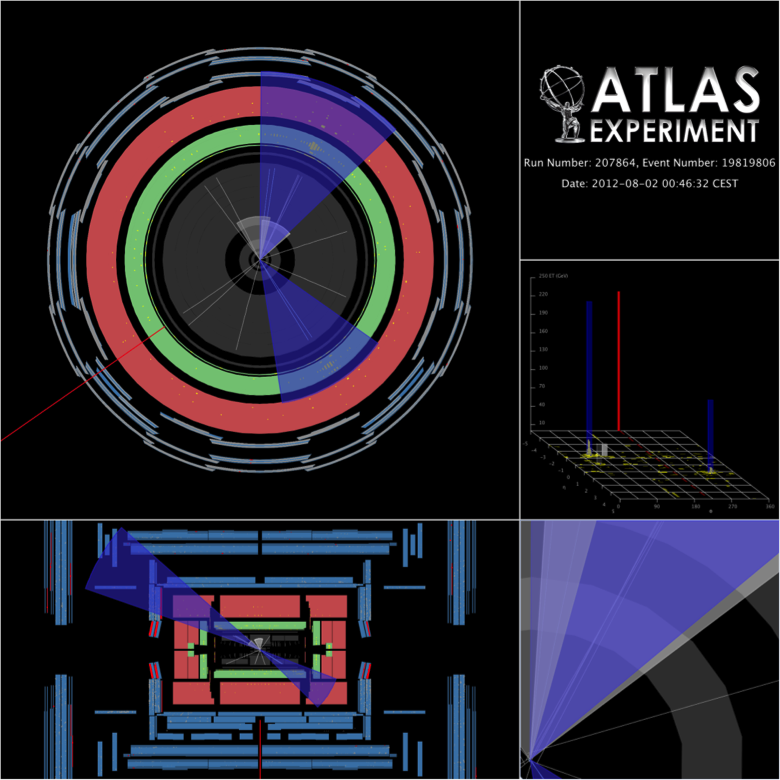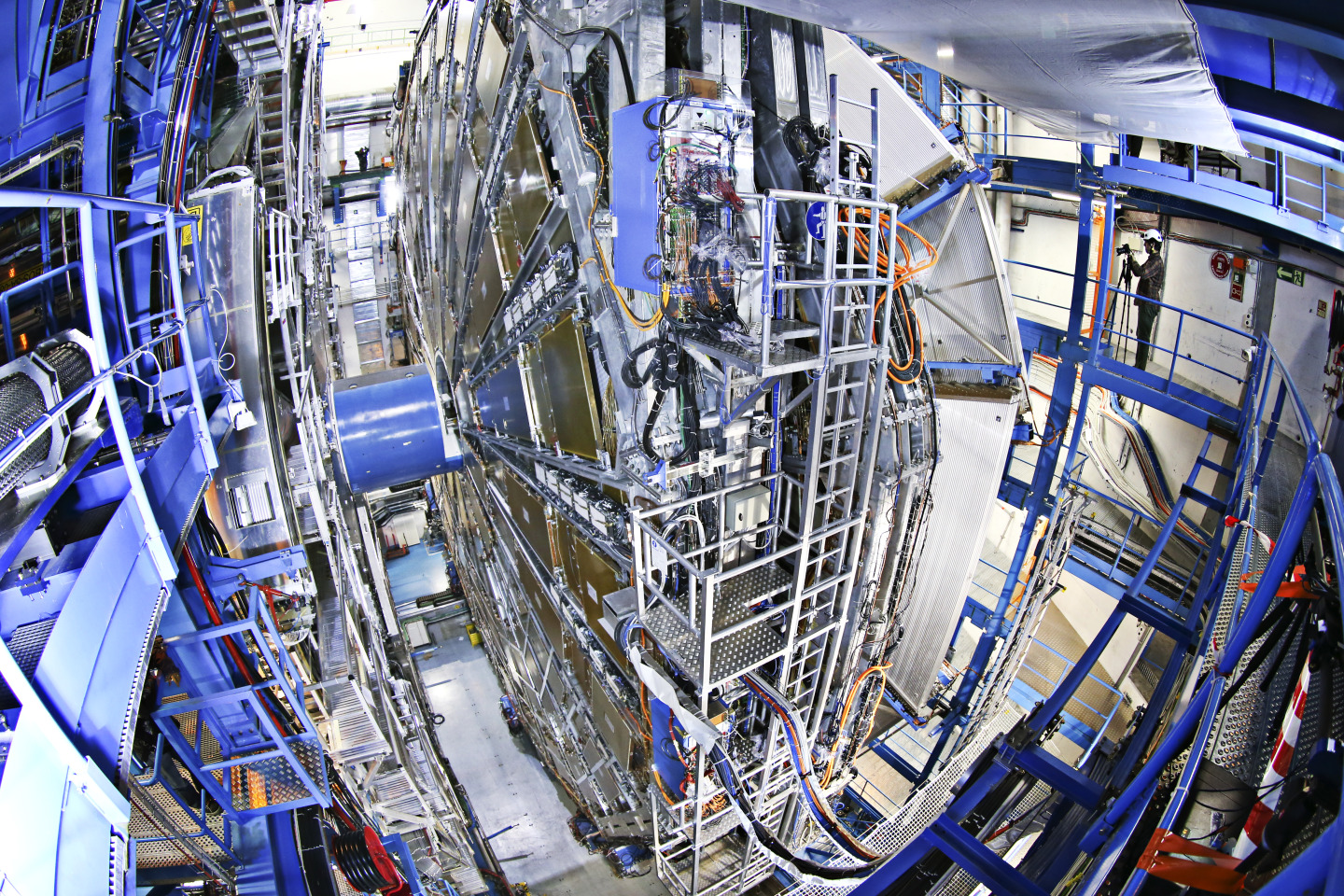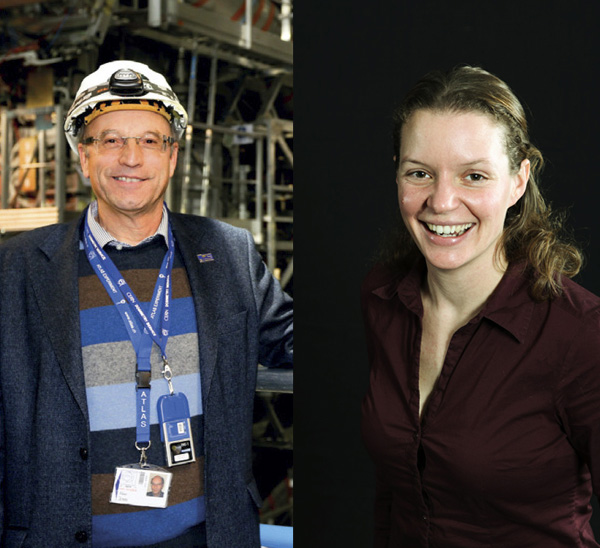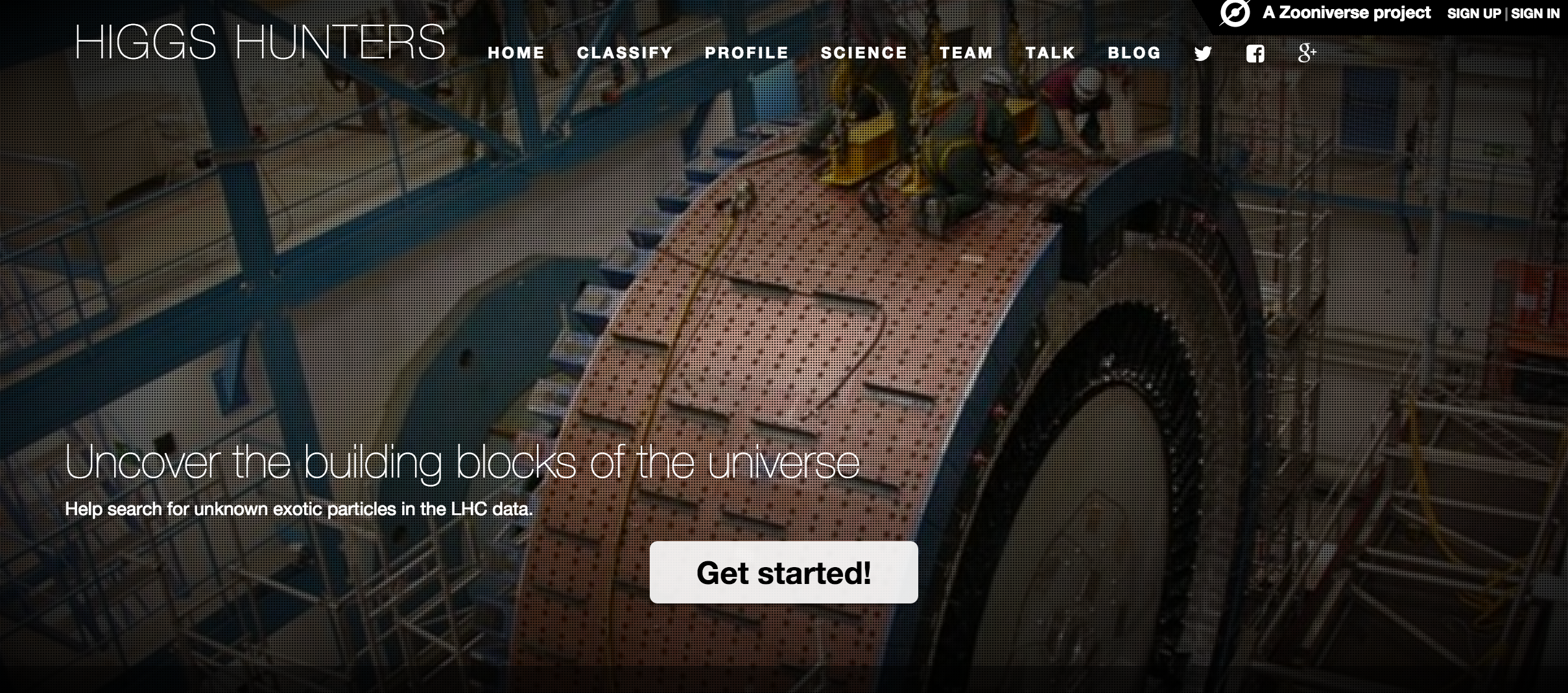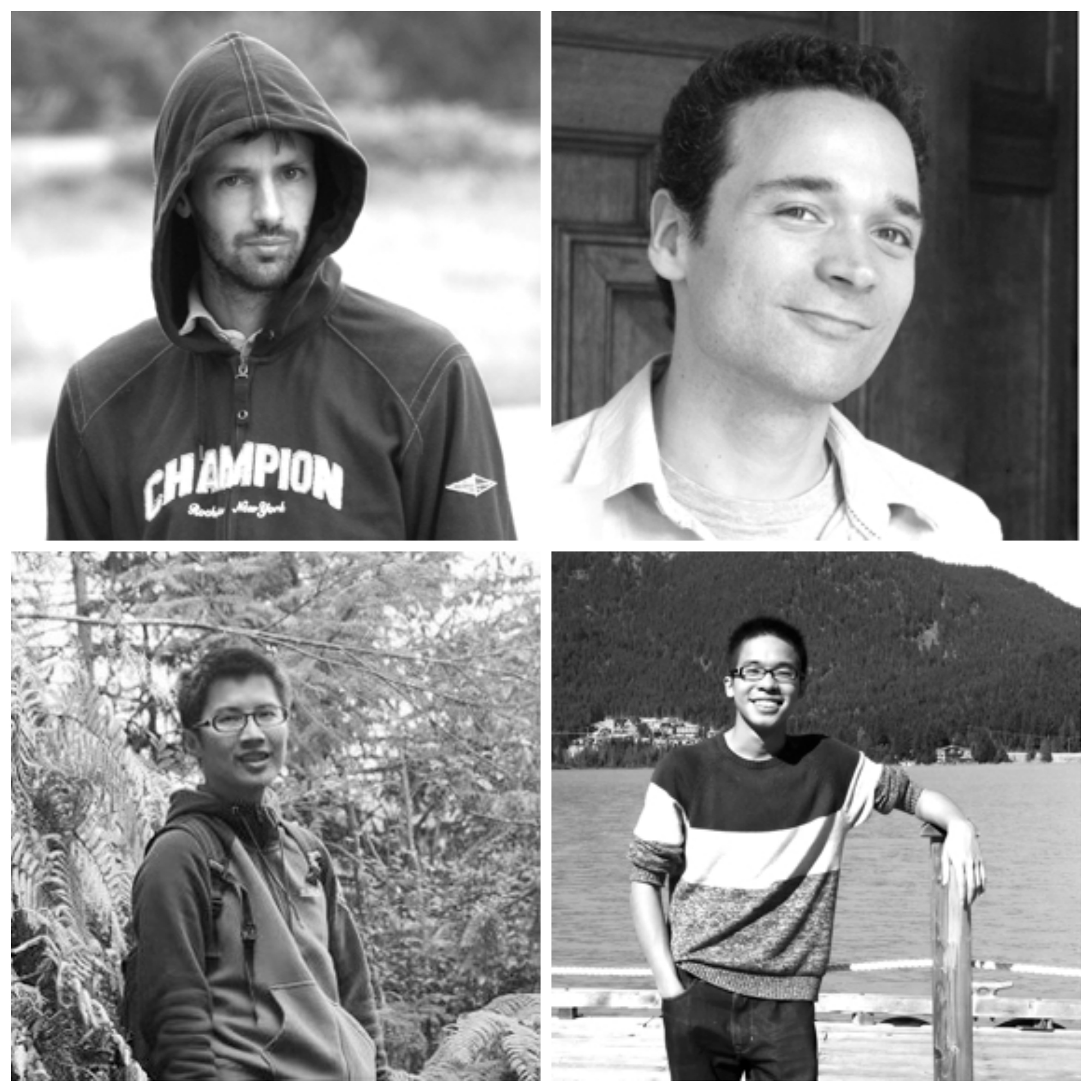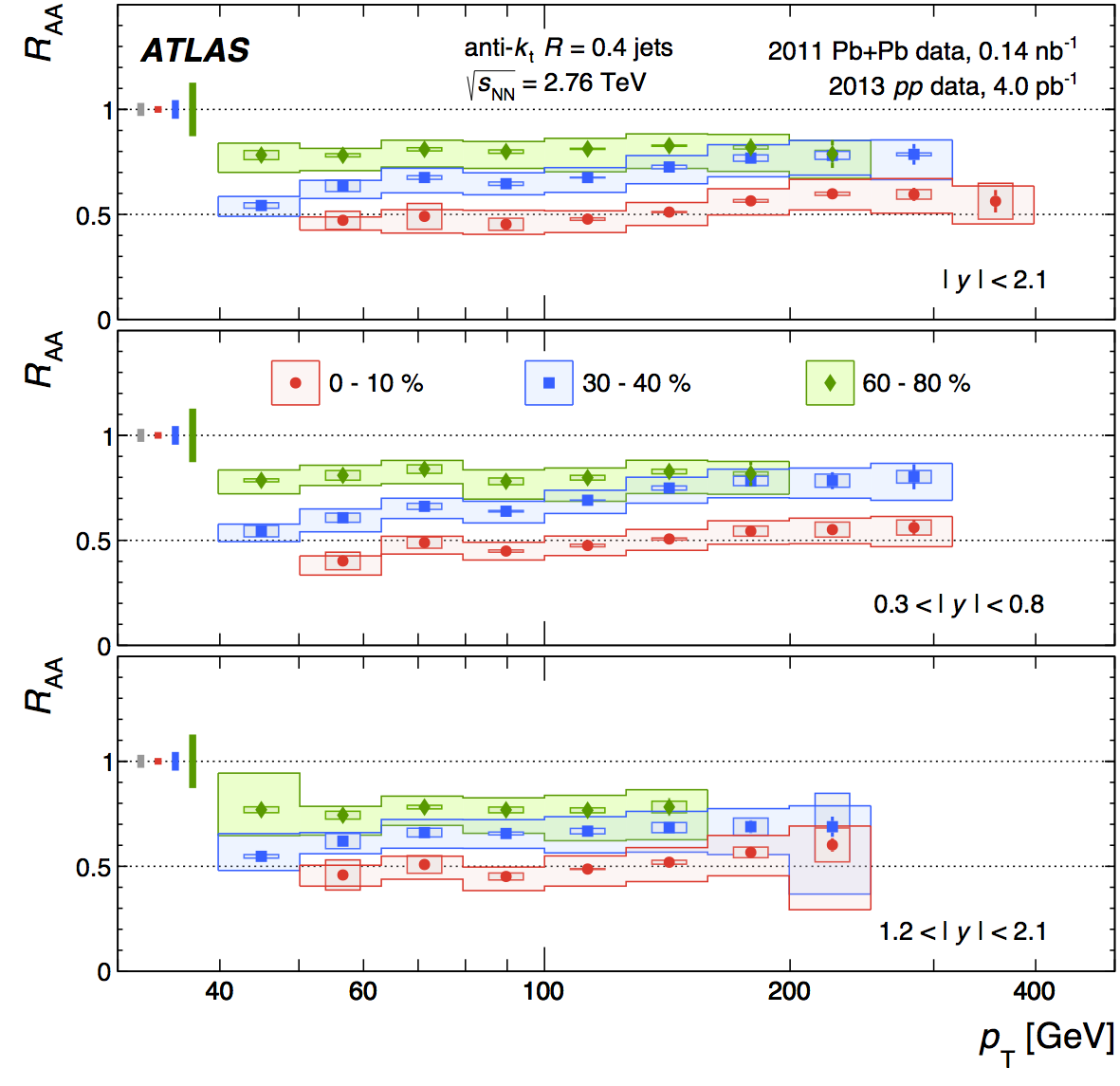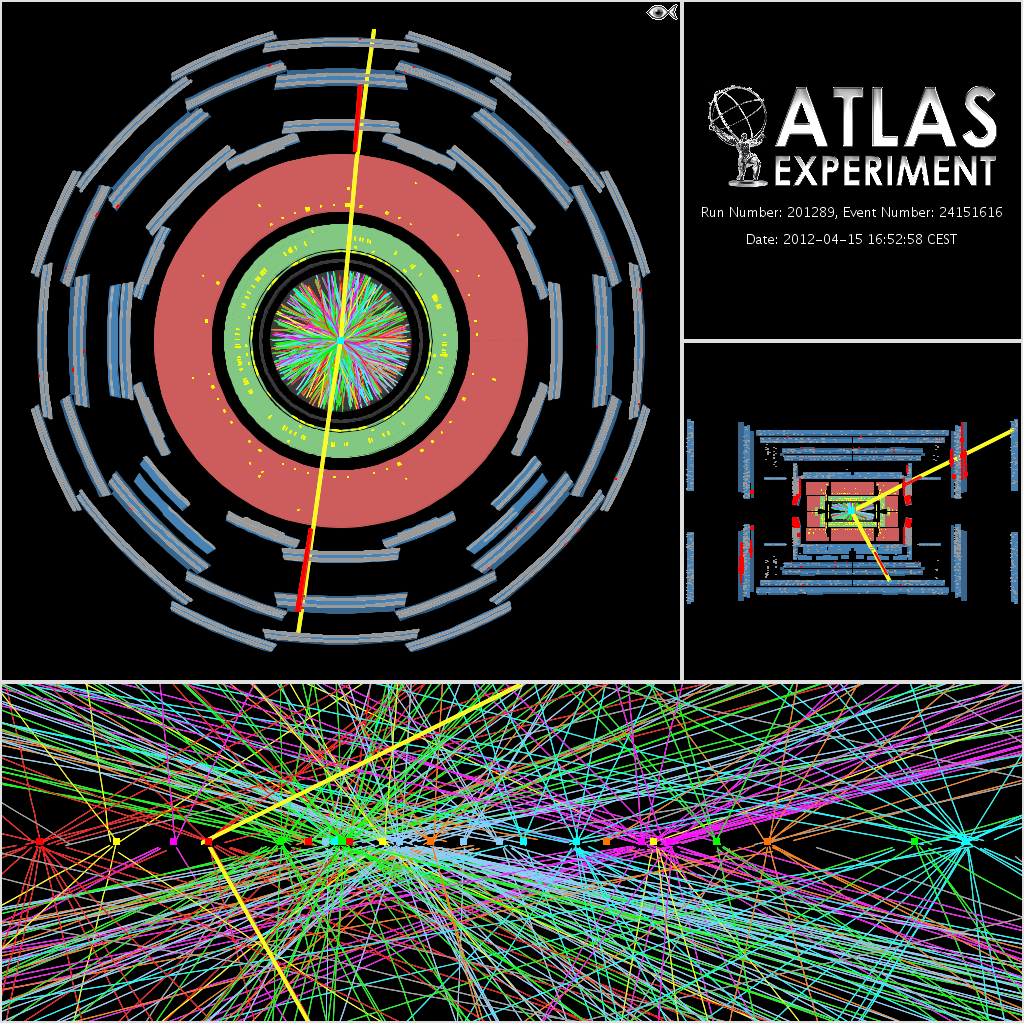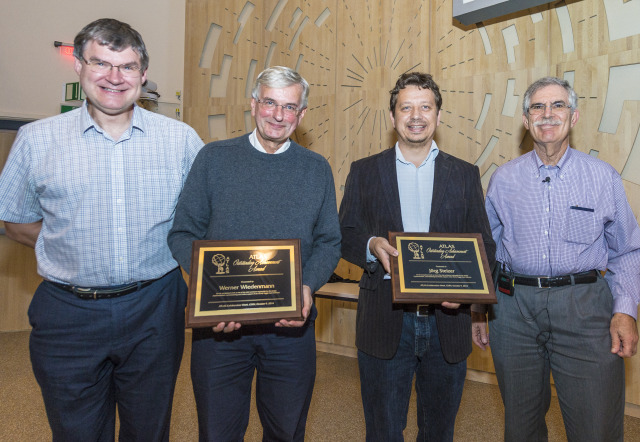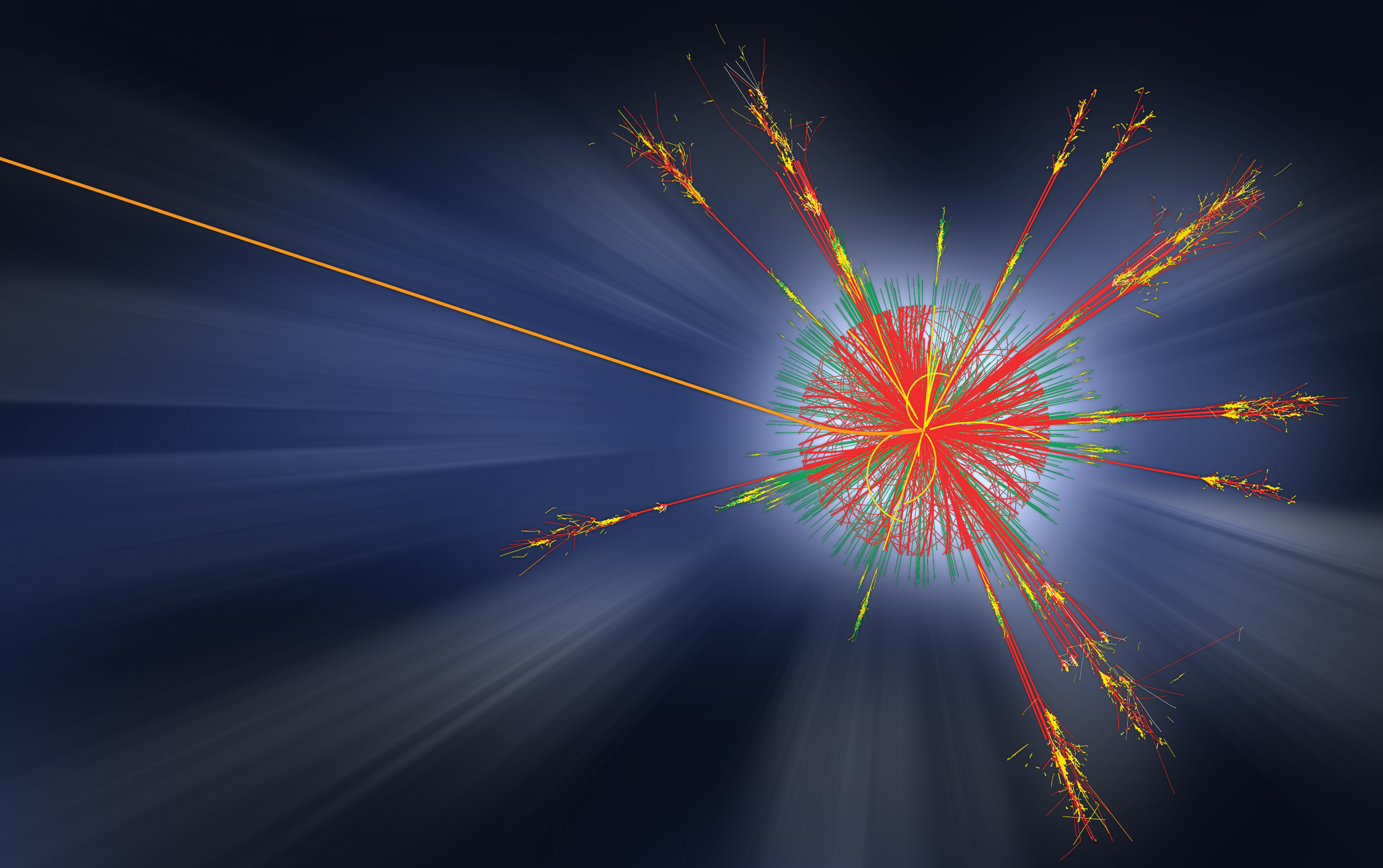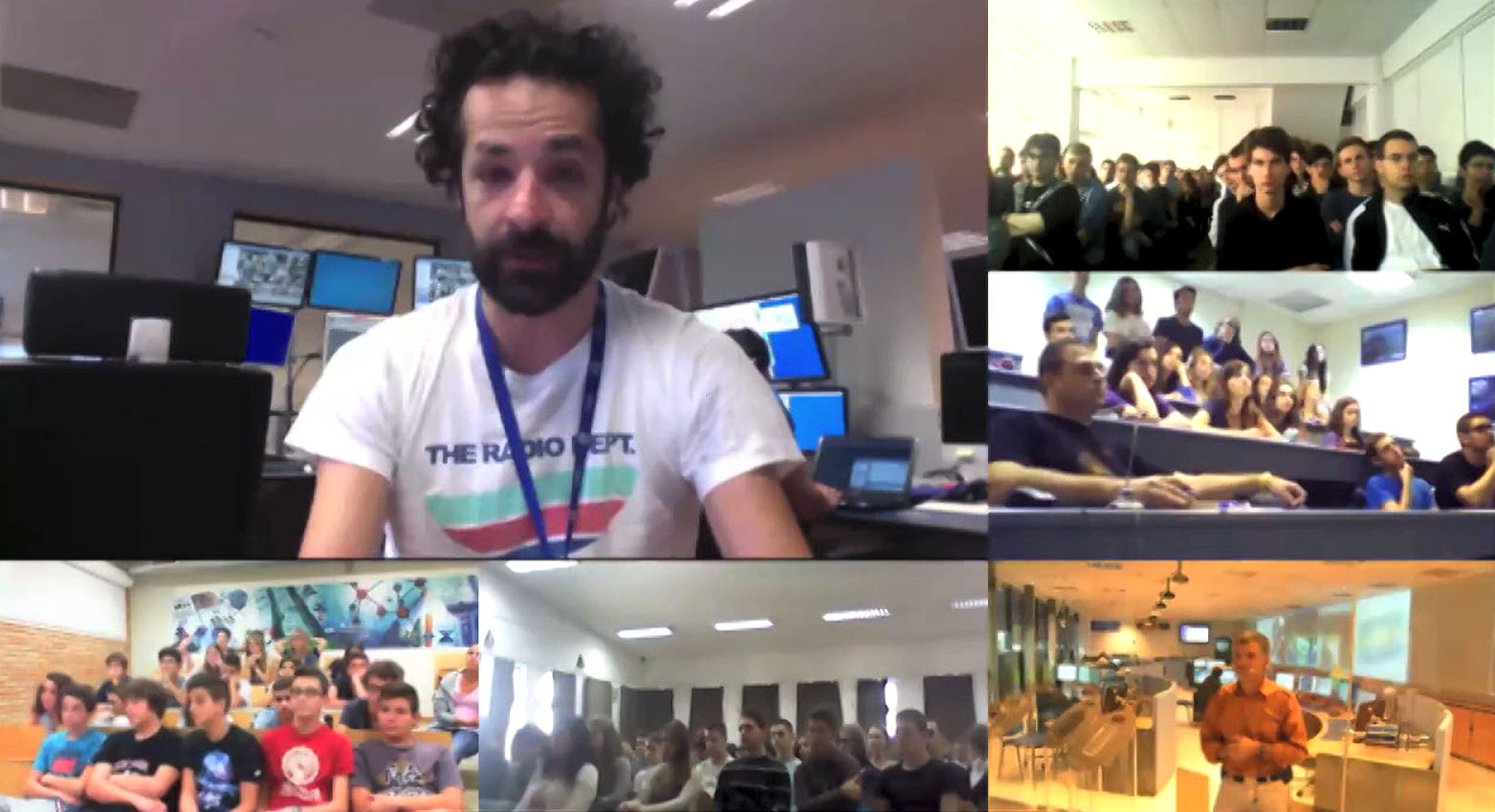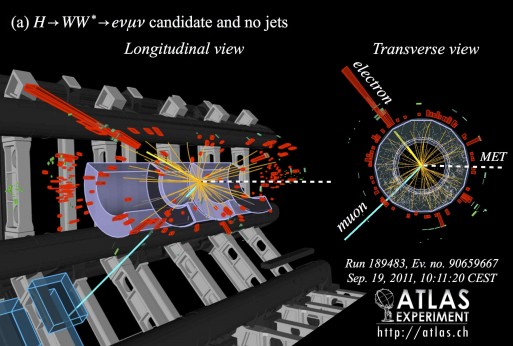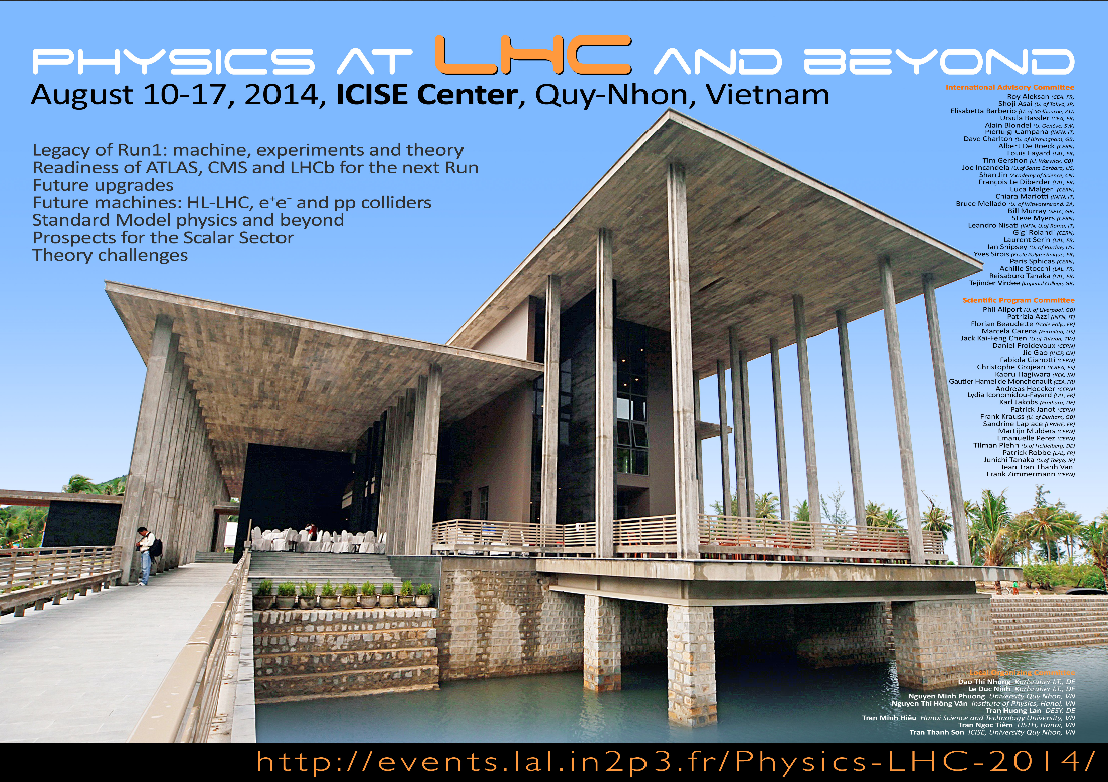Latest ATLAS results on the Higgs Boson
On 17 March, ATLAS presented their latest Higgs physics results at an LHC seminar at CERN from data collected during the LHC's first run. The updated results include searches for the Higgs boson in association with top quarks, measurements of the spin and parity, and improved and combined coupling measurements, all showing good compatibility with Standard Model predictions. These results are also being presented at the 50th Rencontres de Moriond ElectroWeak conference, in La Thuile, Italy, this week.
News |
LHC experiments join forces to zoom in on the Higgs boson
ATLAS physicist wins L'Oreal-UNESCO Women in Science award
Rajaâ Cherkaoui El Moursli is one of the five laureates of the L'Oreal-UNESCO for Women in Science Awards this year.
News |
ATLAS' Higgs ML Challenge data open to public
The dataset from the ATLAS Higgs Machine Learning Challenge has been released on the CERN Open Data Portal.
News |
Winners of the ATLAS Thesis Awards announced
Six PhD students were announced as the winners of the ATLAS Thesis Awards 2014 from 28 nominations received. The winners – Andrew Chisholm, Kun Liu, Marcus Morgenstern, Priscilla Pani, Dennis Perepelitsa, and James Saxon – were given certificates and an engraved glass model of the ATLAS detector during a ceremony on 19 February 2015 at CERN, Geneva.
News |
Second ATLAS PhD Grants
The recipients of the second ATLAS PhD Grant were announced last week. The three young ATLAS physicists – Danijela Bogavac, Silvia Fracchia, and Declan Millar – were given certificates at a small ceremony at CERN, Geneva.
News |
Looking at the Dark side of Matter
The search continues for dark matter, a new kind of matter that doesn’t emit or absorb light. It is assumed to account for the missing amount of mass in our Universe. The total mass in our Universe can be inferred from the observation of gravitational effects of stars in galaxies, and galaxies in clusters of galaxies. However the amount of mass calculated from the observed distribution of light is much less. It is proposed that dark matter makes up the discrepancy as it does not emit light.
The Ties That Bind
A few weeks ago, I found myself in one of the most beautiful places on earth: wedged between a metallic cable tray and a row of dusty cooling pipes at the bottom of Sector 13 of the ATLAS Detector at CERN. My wrists were scratched from hard plastic cable ties, I had an industrial vacuum strapped to my back, and my only light came from a battery powered LED fastened to the front of my helmet. It was beautiful.
Blog |
In search of super charm
If all the experimental evidence supports a theory, why should anyone want to dream up additional particles? Yet exactly this situation arose in the late 1960s. At that time, when the complete table of the known hadrons could be explained with just three quarks, theorists were already proposing a fourth, which they whimsically called “charm”.
The Art of Rediscovery
When I tell people I’m a particle physicist, one of the most frequent questions I get asked is: “So, have you discovered anything?” Funnily, I’ve spent much of the past two years trying to rediscover something that’s already been seen before. In today’s world, which fetishizes the New, this may seem slightly lame, but just because we’ve discovered something, doesn’t mean we’ve fully understood it.
Blog |
Handing In the ATLAS Keys
After completing more than 250 work packages concerning the whole detector and experimental site, the ATLAS and CERN teams involved with Long Shutdown 1 (LS1) operations are now wrapping things up before starting the commissioning phase in preparation for the Large Hadron Collider's restart. The giant detector is now more efficient, safer and even greener than ever thanks to the huge amount of work carried out over the past two years.
News |
"Dirt Detectives"
For five days last week, 110 ATLAS collaborators worked in 10 different shifts to help clean and inspect the detector and the cavern that houses it before the toroid magnets are turned on.
News |
The ATLAS experiment on Scholarpedia
An overview of the ATLAS experiment written by physicists Monica Dunford and Peter Jenni has been published on Scholarpedia. The article is the first in the series on experimental high-energy physics that the editors of the subject hope to host on the website.
News |
Join the Higgs Hunt
Higgs Hunters, the first particle physics venture on Zooniverse, a citizen science project, has been launched in collaboration with the University of Oxford, New York University and the ATLAS Experiment. Higgs Hunters invites online volunteers to participate in studying the properties of the new boson, which may hold clues as to what lies beyond our current understanding of the universe.
News |
Machine Learning Wins the Higgs Challenge
The winner of the four-month long Higgs Machine Learning Challenge, launched on 12 May, is Gábor Melis from Hungary, followed closely by Tim Salimans from The Netherlands and Pierre Courtiol from France. They will receive cash prizes, sponsored by Paris-Saclay Centre for Data Science and Google, of $7000, $4000, and $2000 respectively. The three winners have been invited to participate at the Neural Information Processing Systems conference on 13 December in Canada.
News |
Quenching jets in the hot dense matter produced by colliding lead ions
The Large Hadron Collider is known to collide protons, but for one month a year, beams of lead ions are circulated in the 27-km tunnel and made to collide in the centre of the experiments. The ATLAS experiment has made new precise measurements of the suppression of jets as they blast through the dense matter created by the lead ion collisions.
Defending Your Life (Part 3)
This is the last part of my attempt to explain our simulation software. You can read Part 1, about event generators, and Part 2, about detector simulation, if you want to catch up. Just as a reminder, we’re trying to help our theorist friend by searching for his proposed “meons” in our data.
Blog |
ATLAS Awards Achievements in Run 1
The ATLAS Outstanding Achievement Awards 2014 were given on 9 October to five individuals or teams of physicists and engineers for their contributions during the Large Hadron Collider's first run in all areas of ATLAS except physics analyses.
News |
Defending Your Life (Part 2)
I’ve been working on our simulation software for a long time, and I’m often asked “what on earth is that?” This is my attempt to help you love simulation as much as I do.
Blog |
Five schools virtually visit ATLAS, CMS and IceCube
The ATLAS and CMS experiments hosted a virtual visit together with the IceCube Experiment in the South Pole for students from five different European schools on 2 October. The visit allowed the students to interact with researchers in both the LHC experiments and the IceCube experiment. The virtual visit was a second event in the Open Discovery Space project series' 'Bringing Frontier Science to Schools'.
News |
New ATLAS precision measurements of the Higgs boson: Observation of WW decay
The Standard Model makes many different predictions regarding the production and decay properties of the Higgs boson, most of which can be tested at the Large Hadron Collider (LHC). Since the discovery, experimentalists from the ATLAS collaboration have analysed the complete dataset recorded in 2011 and 2012, have improved the calibration of the detector, and have increased substantially the sensitivity of their analyses.
Doing Physics in Vietnam
One of the perks of working in our field is the opportunities we get to go to exotic places for conferences. I always felt the HEP-MAD conference in Madagascar would top this list, but the one some of us went to in Vietnam can't be too far behind. The Rencontres du Vietnam conference series has been organised in the coastal town of Quy Nhon since 2011, covering different physics topics. This year, one of them was titled Physics at the LHC and Beyond, where I had the privilege of presenting ATLAS soft QCD results.
Blog |
Defending Your Life (Part 1)
Having spent many hours working on the simulation software in ATLAS, I thought this would be a good place to explain what on earth that is (H/T to Al Brooks for the title). Our experiment wouldn’t run without the simulation, and yet there are few people who really understand it.
Blog |
Searches for new physics with photons produced at vertices displaced from the collision point
Theories, such as supersymmetry, propose the existence of new types of particles to explain important questions about the universe, such as the nature of dark matter. ATLAS has performed a search for one such type – exotic heavy particles that have lifetimes long enough that they travel partway through the detector before decaying, at what is called a displaced vertex.
Higgs boson production measurements from the channels of discovery
The discovery of the Higgs boson by the ATLAS and CMS collaborations in 2012 marked a new era in particle physics because it completed the Standard Model and gave us another tool to explore territories beyond. The Standard Model predicts precisely the interactions of the Higgs boson to all other elementary particles once its mass is measured.

